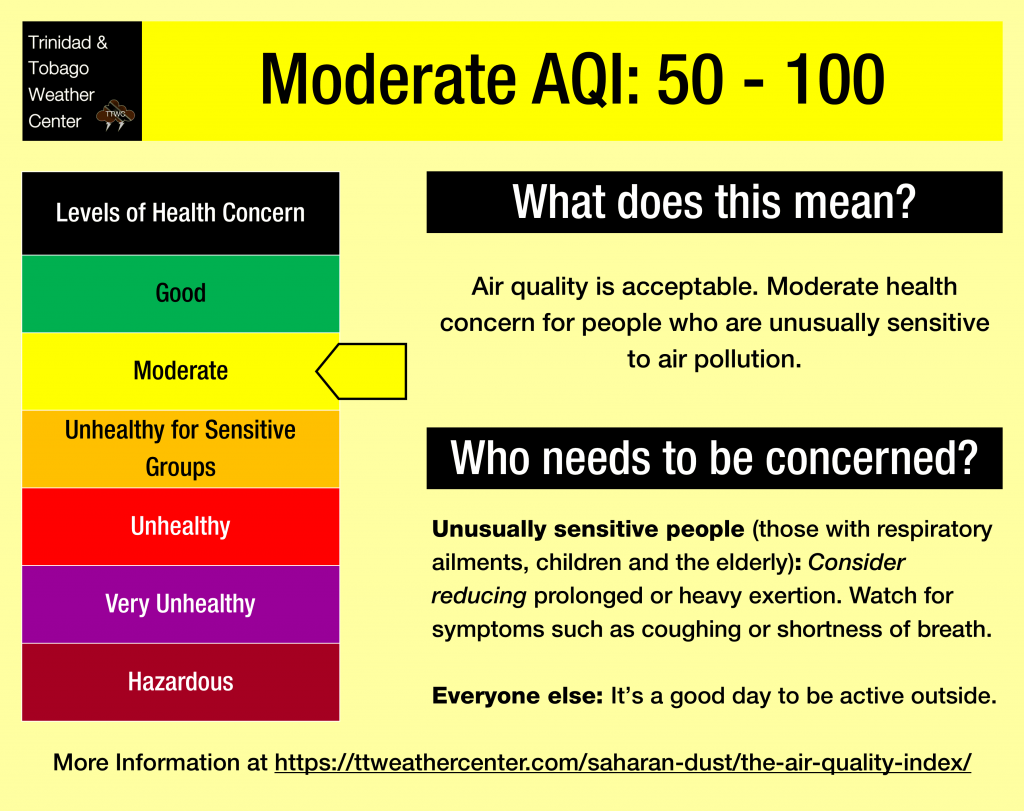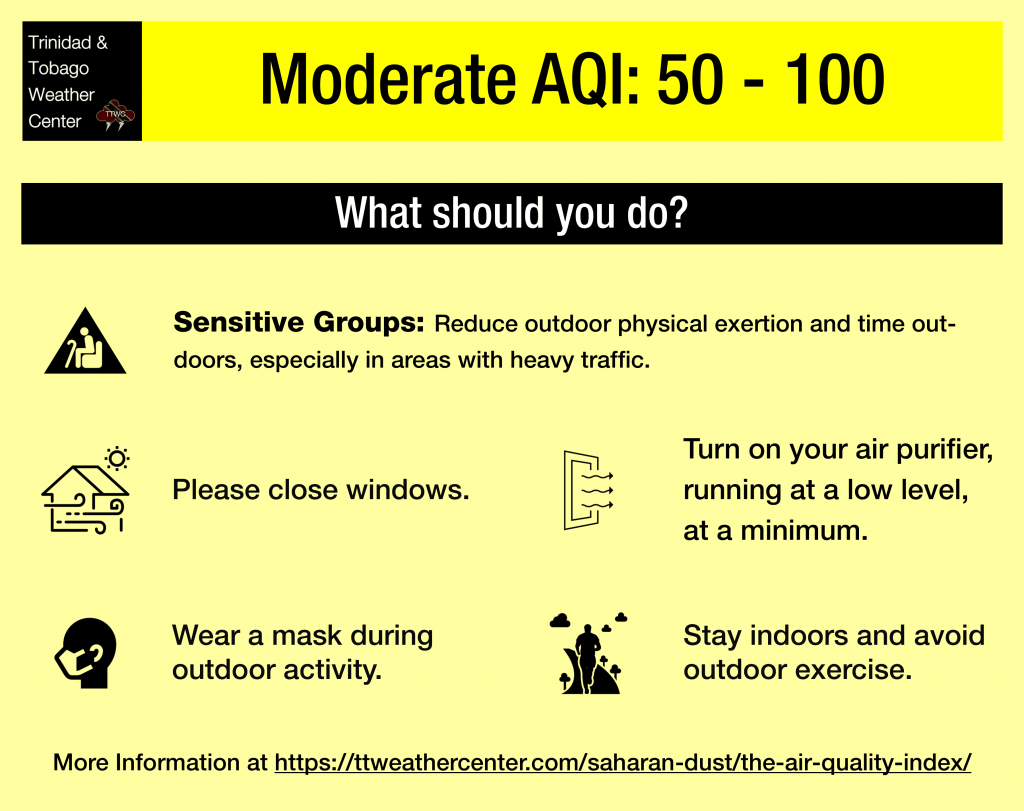A major surge of Saharan Dust is forecast to move across Trinidad and Tobago and the southern Windwards from Monday evening with elevated concentrations forecast through the week.
What you need to know
— Saharan Dust Surges: A high to significant concentration Saharan Dust surge is forecast to move across the area by late Monday, June 17th, through Tuesday, June 18th. Another moderate to high concentration surge is forecast to move across Trinidad and Tobago from Monday, June 24th, 2024.
— Impacts: Air quality is forecast to range from good to moderate, occasionally reaching levels that are unhealthy for sensitive groups on Tuesday through Wednesday, and in the vicinity of smoke, fires, or high traffic.
— What Should You Do: In times of unhealthy air quality, everyone should take the necessary precautions. Throughout the forecast period, sensitive groups are advised to take the necessary precautions, particularly during high traffic and in the vicinity of fires.
Current AQI Levels Across T&T
The official air quality monitoring stations from the Environmental Management Agency (EMA) at Arima, Point Lisas, Toco, and San Fernando are all reporting good levels. There is no data from Mayaro and Beetham, Port of Spain.
Unofficial air quality monitoring stations at Longdenville, St. Augustine, and Woodbrook are reporting good air quality.
These measurements are based on PM2.5 (particulates the size of 2.5 micrometers and smaller, usually associated with increases in Saharan Dust, vehicle exhaust, and smoke) and PM10 particulates.
Over the last 24 hours, visibility has remained at 10 kilometers at the A.N.R. Robinson International Airport at Crown Point, Tobago, at the Piarco International Airport, Trinidad, outside of rainfall activity.
Saharan Dust Forecast

Now through mid-Monday (June 17th): Mild to moderate concentrations of Saharan Dust throughout the period, with air quality generally at moderate levels.
Early Tuesday (June 18th) through Friday (June 21st): Fluctuating high to significant dust levels present across both islands, with air quality at moderate levels to unhealthy for sensitive groups.
Saturday (June 22nd) through Monday (June 24th): Mild to moderate levels of Saharan Dust due to passages of a low-level trough and a tropical wave. Air quality is between good to moderate levels.
What does this mean for you?
With elevated concentrations present and drier and breezier conditions bringing the risk of fires, air quality is still forecast to be reduced, with further reductions in localized areas of fires, blowing smoke and dust, and high traffic.


We’re in a period where the Intertropical Convergence Zone, tropical waves, and occasional tropical cyclones may shield Trinidad and Tobago from the Saharan Dust events. While tropical waves are notable in moving dust across the Atlantic and the Eastern Caribbean, these periodic tropical waves also improve air quality.
The concentration of the dust that follows the wave depends on its strength as it moves off the West African Coast. This is because of stronger thunderstorms across Central Africa. As strong winds move downward and outward from these thunderstorms, the wind kicks up dust as it moves across parts of the Saharan Desert and transports it into the upper atmosphere. This “plume” of dust follows the axis of the wave as it progresses westward into the Atlantic.
Dust that makes it into the upper levels of the atmosphere can then get transported across the Atlantic Ocean. The plumes of dust eventually affect the Eastern Caribbean.
Larger, more concentrated plumes of Saharan dust begin in April and continue through November.











